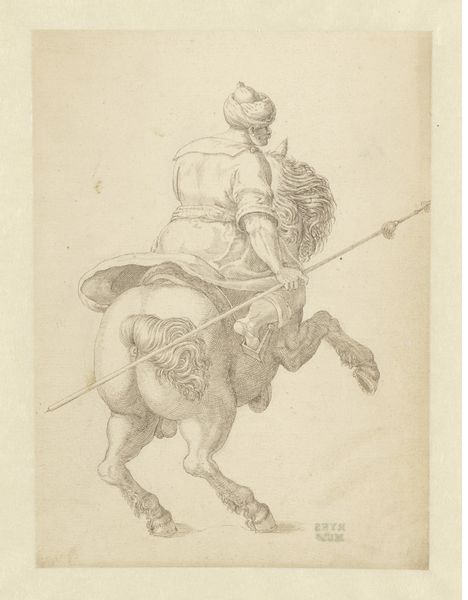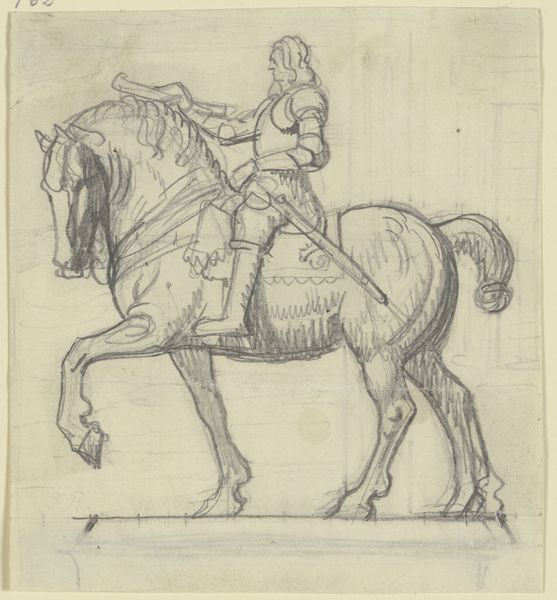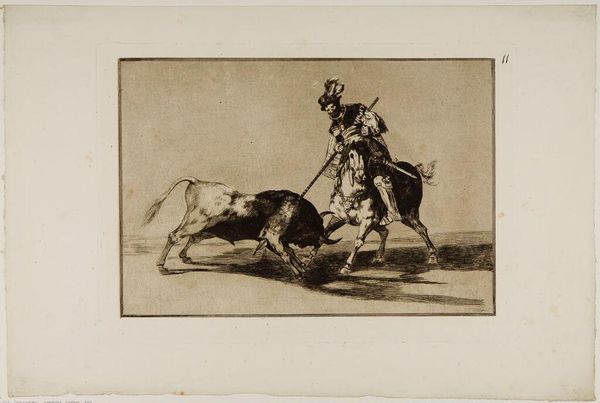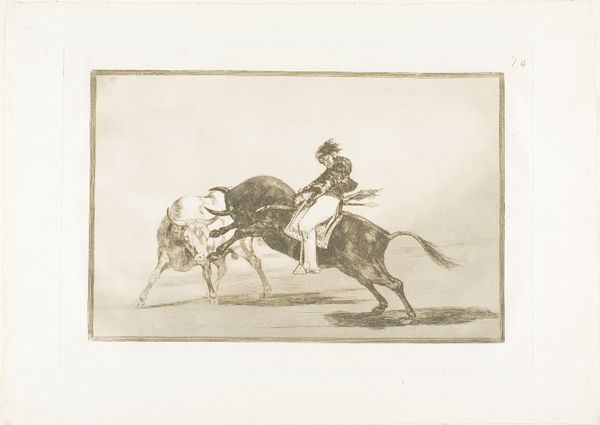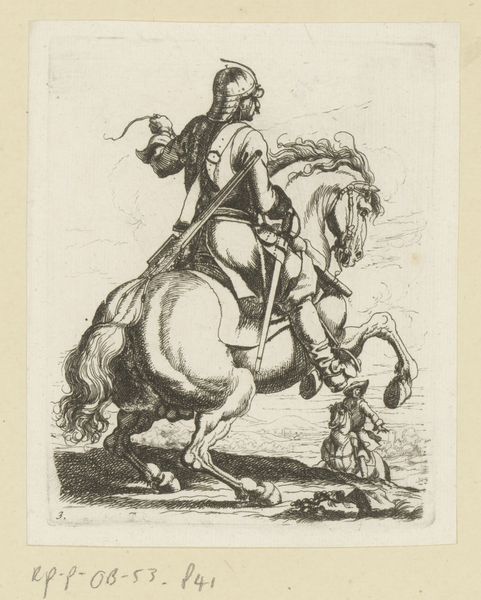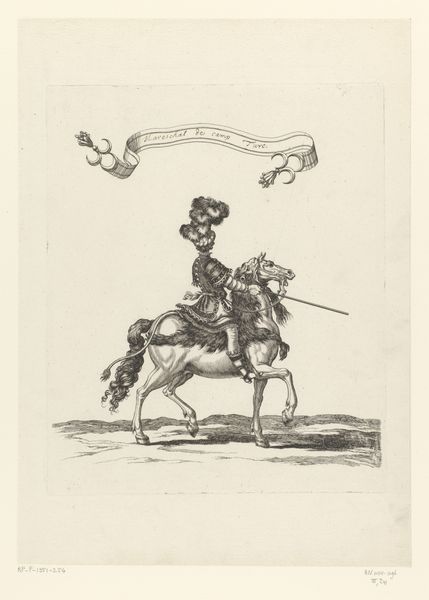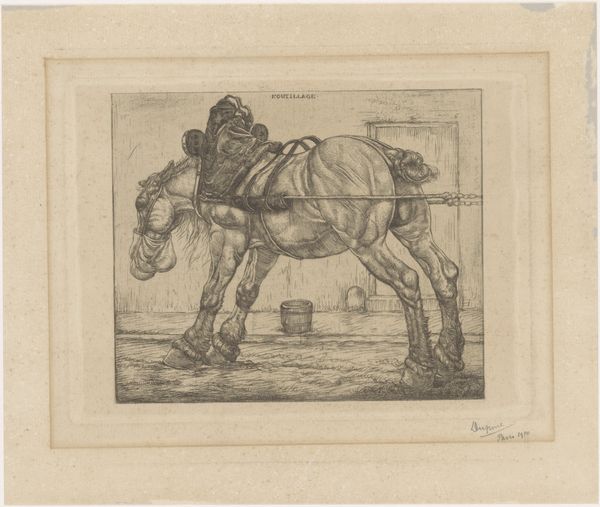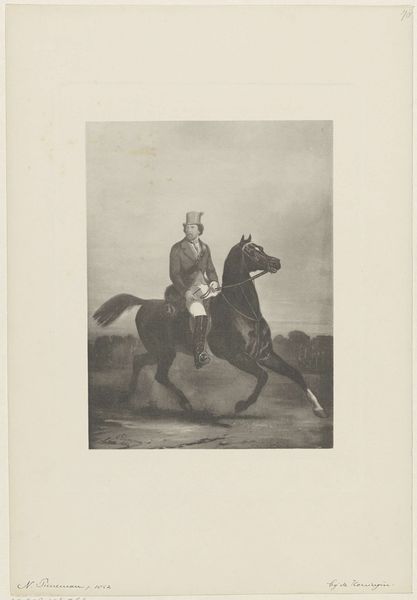
drawing, print, etching, paper
#
drawing
#
medieval
# print
#
etching
#
figuration
#
paper
#
form
Dimensions: 270 × 237 mm (image/plate); 357 × 302 mm (sheet)
Copyright: Public Domain
David Young Cameron created this etching titled "Aquamanile" during the etching revival in Britain. The image depicts a medieval vessel used for washing hands that would have been seen in a wealthy household during that period. Cameron was very interested in medieval architecture and craftsmanship, themes that align with the wider Gothic revival across Britain at this time. We can relate this to the social conditions of Britain in the late 19th and early 20th century as industrialization increased and some artists began to look back to pre-industrial times. The etching itself, with its emphasis on line and detail, reflects the values of the etching revival, as it rejected the commercialization of art and celebrated the individual craftsman. To better understand this artwork, one might research the history of the etching revival, the Gothic revival, and the social and economic conditions of Britain at the time the work was created. Through this, we come to understand that the meaning of art is always contingent on its social and institutional context.
Comments
No comments
Be the first to comment and join the conversation on the ultimate creative platform.
